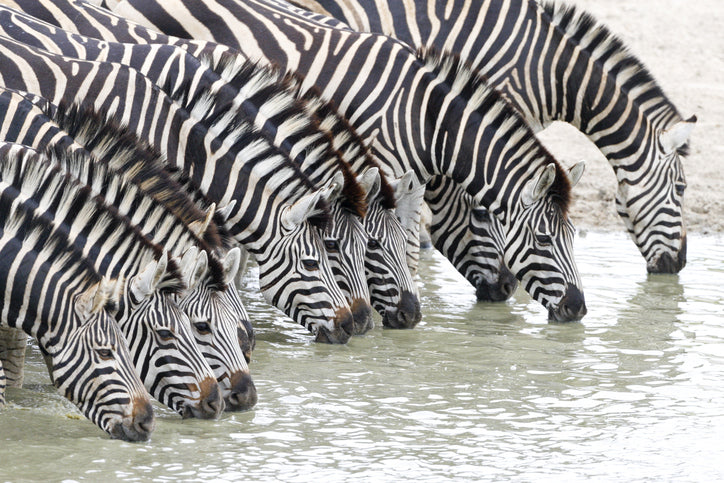
The Zebra
Share
The Striking Zebras of Kruger National Park 🦓
One of its most iconic inhabitants in the Kruger park... our stripey friend, the zebra. With their unmistakable black and white stripes, zebras are not just a symbol of African wildlife but also a fascinating study in social and ecological adaptation.
Pattern Like No Other: Each zebra has a unique pattern of stripes that serves multiple purposes. These distinctive markings provide camouflage by disrupting visual outlines and confusing predators, especially when zebras move as a herd. Additionally, stripes may play a role in temperature regulation and social interactions. 🌿👀
Social Structure: Zebras are highly social animals, living in groups known as harems, which typically consist of one stallion and several mares and their young. These family groups often come together to form larger herds, providing safety in numbers from predators like lions and hyenas. 🐴👨👩👧👦
Habitat and Diet: Zebras are primarily grazers, feeding on a variety of grasses found across the park’s savannahs. Their strong digestive systems allow them to subsist on diets of lower nutritional quality than that required by many other herbivores, which helps them thrive in diverse conditions. 🌾🍽️
Fun Fact for Kids: Did you know that the pattern of a zebra's stripes is as unique as a human fingerprint? No two zebras are exactly alike, and their stripes can help scientists and conservationists identify individual animals in the wild. 🦓🔍
Engage and Learn: As you colour in the Zebra on your Kruger Park roll, think about how their stripes blend into the tall grasses and the shadows of the trees. This clever disguise is just one of the many wonders of these striking animals, each stripe telling a story of survival and beauty. 🖍️📘